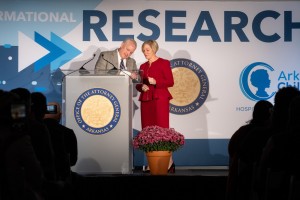I just spent two days at a statewide medical association annual meeting. We were there to help educate the physicians on real asset investing. I met many interesting people and likely started some new and exciting relationships. Many of the physicians stopped to talk to us about real estate investing and the benefits of passive cash flow, but there was a troubling undertone that permeated many of the conversations. A startling number of these doctors admitted that they were "burned out" to some degree with the practice of medicine.
Often, I have had doctors confide in me that they are unhappy with medicine. One 58 y/o family practice doctor once told me that he "hated the business of medicine" but loved taking care of his patients. I have asked others if they would, or could, enjoy medicine if the documentation burdens and the micromanagement were removed. Almost 100 percent say that they would love to practice medicine the way they were trained, which is to put the patient first.
While I am familiar with physician burnout, I was unaware of its pervasiveness. According to a 2018 Medscape survey, physician burnout has reached epidemic proportions and is above 50 percent. A 2015 Mayo Clinic article compared physician surveys from 2011 and 2014 and found that burnout increased from 45 percent to 54 percent during those three years. Work-life balance was also significantly decreased during that time. These are staggering numbers. How did this occur and what can be done?
According to a presentation given by Tait Shanafelt, MD, the Director of the Stanford WellMD Center, there are structural defects in the system that must be addressed by the institutions and physician employers. The thesis was that the burden should not be placed on the individual physician, but should be addressed at the corporate, or institutional level. One solution, proposed in Diseases of the Colon and Rectum was, "...enable(ing) physicians to devote 20 percent of their work activities to the part of their medical practice that is especially meaningful to them." How comforting that the doctor might now be "allowed" to enjoy one-fifth of his chosen vocation! I am not sure if it is worth ten years of medical school and residency only to have a 20 percent satisfaction ceiling! While the structure and mindset does need to change, the healthcare system moves like the Titanic and will not change course easily. I do not see any short-term corporate solutions on the horizon.
Given that scenario, what can we do as physicians? Certainly, doctors can lobby for change, enter politics and try to change the system. In the long-run, this may have lasting effects. In the interim, we need to take care of our personal health and our families. If we cannot change the burdensome infrastructure and oversight that has infected medicine over the past 20 years, we must change ourselves. We may not immediately solve the systemic issue, but we can chip away at our own collective situation one doctor at a time.
What can individual practitioners do to counter the potential for burnout? Doctors need to learn to talk the language of money. It sounds trite and simplistic, but none of us were taught that language in school. Many feel that it is reserved for the "experts" or the guys in the C-suites. That is simply not true. A modicum of financial education could start you on a path to gain some control over your professional life and buy back a piece of the precious time that you are losing in front of a computer screen. A physician who is less dependent on income from a medical practice is less stressed and enjoys his profession more. I can promise that your patients will notice and they will receive more compassionate care.
In my case, I was slowly able to produce enough passive income outside of medicine that I have been able to mold my practice to my liking. In turn, this has, with all modesty, provided a much more pleasant and caring environment for my patients. I still work within the same system, but I now have the power to eliminate or change conditions that affect my time, my income, or my patients' care.
I love going to work each day. While I could have retired long ago, my practice is more fun now than ever. I have the freedom to spend as much time as needed with each patient and I can treat those without insurance for free without financial angst or external oversight. I believe that an army of doctors with control over their professional lives would create the best healthcare system in the world.
I created my freedom through a strategy that fit the lifestyle of a full-time practicing orthopedic surgeon. There is an infinite number of ways to buy back time and there are plenty of resources to learn them. It is not impossible, and it can be done within the time constraints of a busy medical practice. It is beyond the scope of this short article to lay out the strategy, but if you start looking, you will find seminars, articles and podcasts that will help you get started. Physicians are smart and have the capacity to do great things. Find a way to create some passive income. You don't have to create enough to retire, you just need a little to take off some of the pressure!
Thomas Burns, MD is an orthopedic surgeon in Austin, Texas. He is a graduate of Southwestern Medical School and completed his sports medicine fellowship training at the Steadman Hawkins Clinic in Vail, CO. He is a member of the Forbes Real Estate Council and is frequently featured in nationally circulated print articles and popular real estate-oriented podcasts. Dr. Burns is Principal and Co-founder of Presario Ventures, a real estate investment management firm. tom@presarioventures.com; www.presarioventures.com











